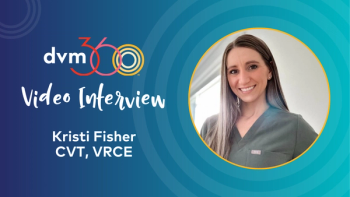
7 ways to be more effective in the exam room
There's never enough time in your day—so make every moment in the exam room count. And remember, even small improvements in exam-room procedures can dramatically improve your whole team's efficiency.
There's never enough time in your dayso make every moment in the exam room count. And remember, even small improvements in exam-room procedures can dramatically improve your whole team's efficiency.
1. Stock up. The exam room is your workshop, so make sure you have all of the tools you need arranged where you can find them. If you frequently find yourself leaving the room to retrieve something like an otoscope, buy another one just for the exam room. The added efficiency should more than make up for the cost.
If you're doing an exam that involves vaccines, train your team members to get them ready for you. When you're treating skin problems, the slides and mineral oil should be right at hand. And each room should be arranged similarly so you can find everything easily, regardless of which room you're in.
2. Assistants, please. Your time in the exam room should be spent examining your patient and explaining medicine to the client. Your staff can do almost everything elsefrom recording the initial complaint to checking vital signs, trimming nails, and demonstrating proper use of medications. An assistant or technician can cut your time in the exam room by 50 percent; don't go in there without one.
3. History precedes us. You're much more efficient if a technician takes a history before you ever enter the room. And with this approach, staff members understand the scope of the problem, so they can get obvious samples, fetch required instruments, and so on. Reciting the problem for the technician may also clarify the issues for pet owners; when you arrive the problem may be clearer in their minds, or they may have thought of something else to tell you.
Ideally, you'll look over the history and review the patient's records before you enter the exam room. This approach lets you determine whether the pet's experiencing a new problem, a recurrence, or a chronic conditionso you look even more prepared when you enter the room. Finally, you'll be able to flesh out the initial history with pertinent questions while you do your exam.
4. Poke 'em, doc. You can, and should, do many procedures in front of clients. Clients worry that we'll hurt their pets when we disappear into the treatment area. So take every opportunity to show that most procedures are painless and safe. For example, do noninvasive procedures such as skin scrapes, swabs, aspirates, and eye exams in front of owners. They're impressive ways to demonstrate your expertise and thoroughness and give pet owners a gee-whiz experience.
5. Out, Spot! Once you finish your physical exam and take simple samples, you may want to ask a team member to remove an exuberant or noisy pet from the roomparticularly if the pet needs a procedure you don't want to do in front of an audience, such as urine collection, fecal test, catheter insertion, or ear cleaning. During the quiet time with owners, you can tell them what tests you'll run, your differentials, and what the next step will be.
6. Love 'em and leave 'em! When your initial exam is complete and you're awaiting test results, always give owners the option of leaving their pet with you while they return to work or run a few errands. This option pleases clients, frees up an exam room, and makes it easier for you to re-examine the animal or re-do a test if you need to.
7. Mark your memories. Some doctors like to chart in the exam room, while their impressions are fresh. After all, it's easy to forget what you were thinking once you step out of the room and into the inevitable chaos beyond the exam room door. Plus, you won't have to face a towering pile of charts later in the day, when you're tired and distracted.
But keep in mind that clients value your undivided attention, so it's important not to short them on sincere attention during your conversation. Make sure you maintain eye contact, and pay attention to your clients' expressions.
Dr. Craig Woloshyn, a Veterinary Economics Editorial Advisory Board member, does all he can to work efficiently at the Animal Medical Clinic in Springhill, Fla., which he owns, and at Sun Dog Veterinary Consulting. Please send questions or comments to ve@advanstar.com.
Newsletter
From exam room tips to practice management insights, get trusted veterinary news delivered straight to your inbox—subscribe to dvm360.




